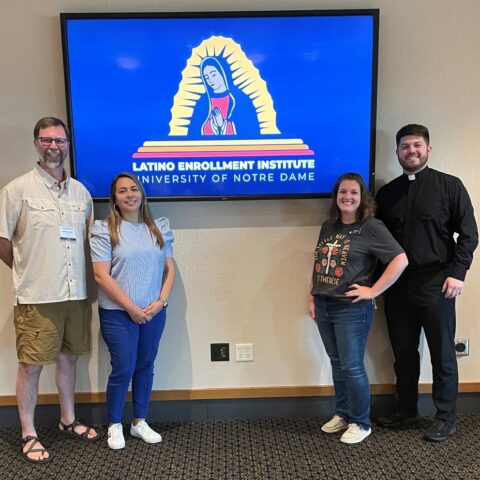At Christ the King School in Little Rock, the teachers became the students for a day on Jan. 19 as specialists from the STEM Institute at the University of Central Arkansas in Conway came to enlighten them on how to better incorporate collaborative learning between the sciences, technology, engineering and mathematics for critical thinking and problem solving.
“I think the whole world is more technology-based now and when you look at the globalization, you need people with the skills,” said Uma Garimella, director of the UCA STEM Institute and biology professor. “… If you look at all the recent innovations, it’s integration of art, science, math, so when you teach STEM you don’t teach each subject in isolation; you integrate to make sure they’re all connected so when you go out, find a job you are more prepared because you see different aspects of it.”
UCA’s STEM Institute, Arkansas’ first of now 12 on campuses throughout the state, was founded in the mid-1990s. It aims to train teachers and provide materials, including technology, to classrooms that use STEM curriculum. Training varies, including grants for individuals to professional development programs at a school.
“Regardless of what we’re doing we need to make sense of the world around us and we kind of lose that somewhere along the way when we’re spending all of our time in front of a computer or with a textbook in front of us,” said UCA science specialist Sharon McKinney. “Our goal is to teach in a different way.”
Christ the King is the first Catholic school to bring the institute specialists to its campus for STEM training. However, several teachers throughout the state will come to the institute for individual training. Institute specialists have visited Christ the King twice, working with second through eighth-grade teachers. They are scheduled to come to the school several more times, paid for by federal Title II professional development funds, not costing the school money, said principal Kathy House.
“These ladies are the professionals and they are explaining why we do STEM, how it all works together and how it benefits the kids,” House said. “Now (the teachers) can take some of those STEM books and use the lessons they saw. Without having the background it was just one more thing to do and they didn’t really understand why they needed to do that. So this is putting the why and the how with those lessons.”
School training can vary, lasting an hour to the entire school day, and what the specialists share with teachers depends on the needs, said McKinney, who taught elementary and middle school for 21 years.
“We may help them in building curriculum plans, we may help them in developing individual lessons, we may provide material support,” she said.
Cara Cates, the institute’s math specialist who taught for nine years, said they also offer to “model teach.” For her, this means teaching a class the STEM lesson, co-teaching the second period and observing the teacher during the third period.
“It’s not an ‘I’ll come in and teach all day for you,’ it’s ‘I’m doing this so you can learn and we can have that conversation later,’” Cates said.
Christ the King fifth-grade teachers Melissa Gramlich, who teaches math, and Sarah Wendel, science, who went through the institute training, said incorporating STEM or STREAM — which includes religion and art — can be more work, but the students remember the material better. For example, students recently had to construct a greenhouse, which incorporates science and math, but also ties in social studies by understanding better what farmers do and how tough it must have been to grow food during the Great Depression, which connects to a novel they are reading.
STEM lets “them have those student-centered moments in the classroom where it’s them navigating the learning and doing lots of hands-on projects that they actually get to apply what they’ve learned to a real-life problem,” Wendel said.
Thinking about college and careers for children in elementary and middle school may seem premature, but Cates said STEM lessons lay the groundwork for their future.
“The Fortune 500 companies will list what they look for in an employee and in the last 10 years, that list has almost flip-flopped,” Cates said. “The top of their list is not that you have collaboration skills, that’s moved down and now its problem solving and it’s consistently at the top lately.”
Gramlich and Wendel both agreed STEM learning is an introduction to how core subjects are intertwined in everyday life beyond the school walls.
“It’s all kind of rolled in together in the real world so it certainly should be rolled together in our instruction too. It’s hard but we’re learning — learning how to teach it,” Gramlich said, with Wendel adding, “It’s worth it, that’s for sure.”




